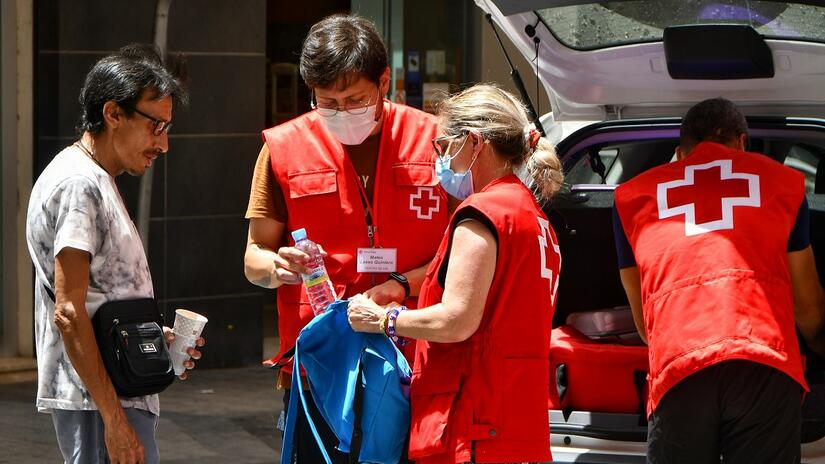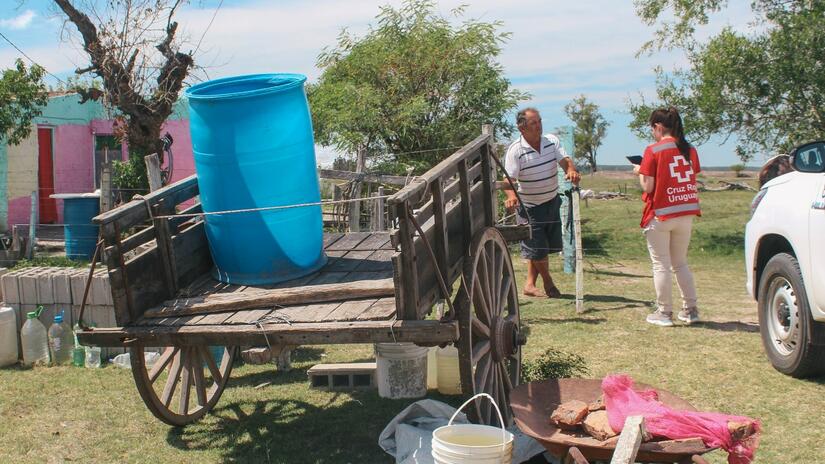Did you know that heat waves are becoming more frequent, longer, hotter, and deadlier due to climate change?
Every year, they put millions of people at risk of heat-related illnesses and claim the lives of thousands of others.
But the threats heat waves pose are preventable. And the steps that we can take to protect ourselves, our friends and our families from extreme heat are simple and affordable.
Here’s what you need to know about heat waves, what you can do to #BeatTheHeat, and some inspiration from Red Cross and Red Crescent Societies.
What is a heat wave?
A heat wave is an extended period of unusually high temperatures and often high humidity. Exact definitions of a heat wave can vary between countries depending on what temperatures and conditions are normal for the local climate.
Heat waves can cause people to suffer from shock, become dehydrated, and develop serious heat illnesses. Heat waves also put people with chronic cardiovascular and respiratory diseases at a high risk.
People living in cities and towns tend to be the hardest hit by heat waves because urban areas are generally hotter than the surrounding countryside.
What should I do to prepare for a heat wave?
We can reliably forecast heat waves in most places, so you usually have time to prepare. Make sure you keep an eye on your local weather forecast and remember the following:
-
Drink plenty of water, even if you don’t feel thirsty
-
Avoid being out in the sun. Find shade or a cool indoor space where possible. Tip: you can use shades or reflective materials on your windows to help keep the heat out of your home.
-
Wear loose, lightweight and light coloured clothing
-
Check on your family, friends and neighbours – particularly if they are elderly or unwell – to make sure they’re okay
-
Eat enough food, ideally smaller and more frequent meals
-
Look out for symptoms of heat-induced sickness - breathlessness, chest pain, confusion, weakness, dizziness or cramps – and seek medical help if needed
Watch this short video to learn more or visit our dedicated heat waves page for even more advice.
Inspiration from National Societies on how to #BeatTheHeat
Last June, in Satmatha, Bangladesh, volunteers from the Bangladesh Red Crescent set up a stage in the heart of the city where they gave creative public performances inspired by heat for Heat Action Day 2022.
From poetry to comedy, dance to drama, volunteers performed their hearts out – all in local dialects – to catch people’s attention and teach them all about heat risks.
Their performances caused so much of a stir that they made it into national news in print and digital – spreading the word on how to #BeatTheHeat even further! You can watch some clips of their performances here.

Bangladesh Red Crescent volunteers in Satmatha hold public performances on the theme of heat in June 2022 to raise awareness within their communities about heat risks.
Photo: Bangladesh Red Crescent Society
In the town of Kandi, in West Bengal, India, Indian Red Cross Society volunteers took to the streets last year when temperatures soared.
During a severe heat wave that struck the region, they set up purified drinking water points at their branch office, at bus stops, and outside hospitals so that members of the public could rehydrate during the difficult conditions.
Making themselves known with big, colourful parasols and giant barrels of water, they brought shade, refreshment and smiles to their local community.

Indian Red Cross Society volunteers in Kandi, West Bengal offer cold water and shade to help people cope during a heat wave.
Photo: Indian Red Cross Society
In Spain, the Spanish Red Cross has a long history of supporting communities across the country to stay safe during the summer heat. Their volunteers conduct a lot of outreach – through social media, phone calls and street mobilization – to share tips on how people can stay cool.
They also check in on older people and people with chronic illnesses who are at particular risk when temperatures rise. And in some regions, volunteers venture out into their communities on really hot days to hand out water, paper fans and caps.

Spanish Red Cross volunteers hand out water and support people during intense heatwaves in summer 2022.
Photo: Spanish Red Cross
Extreme heat doesn’t just put people's health at risk, it can take a big toll on people’s livelihoods, too. In Uruguay this year, prolonged periods of extreme heat and a lack of rain have led to droughts, which are causing huge damage to farming and agriculture.
To help communities cope, Uruguayan Red Cross volunteers have been sharing information on how people can protect themselves and their livestock during heat waves. With support from the IFRC’s Disaster Response Emergency Fund (DREF), they’ve also been providing water and sunscreen and are offering cash assistance to families who are most affected. Find out more here.

A Uruguayan Red Cross volunteer speaks to a farmer in a rural area who has been affected by extreme heat and drought to understand what assistance he needs.
Photo: Uruguay Red Cross
Helpful resources to learn more about heat
- City heat wave guide for Red Cross and Red Crescent branches
- Extreme heat: Preparing for the heatwaves of the future – a joint report from the IFRC, Red Cross Red Crescent Climate Centre, and the United Nations Office for the Coordination of Humanitarian Affairs (UN OCHA)
- Heat Toolkit – a collection of posters, social media assets and videos about heat waves produced by the Global Disaster Preparedness Centre

